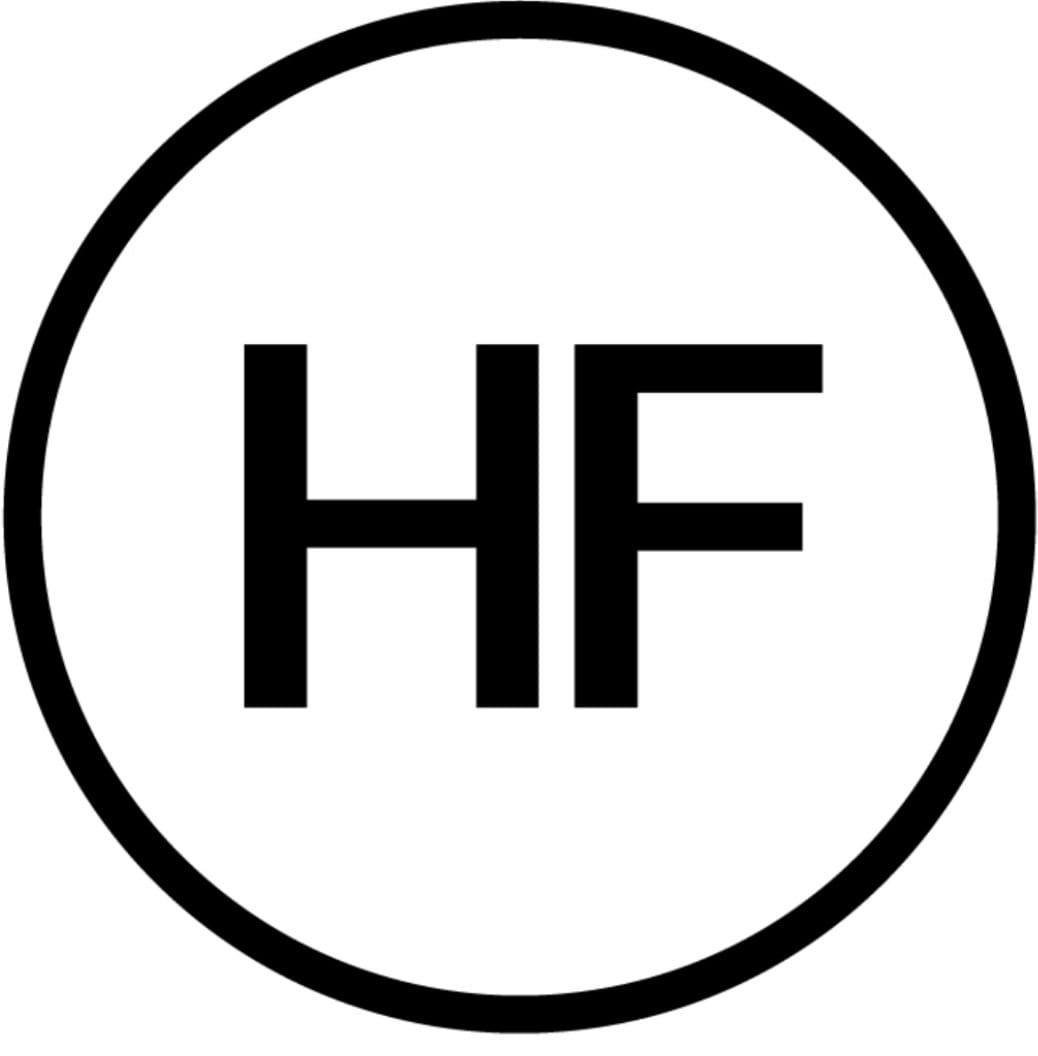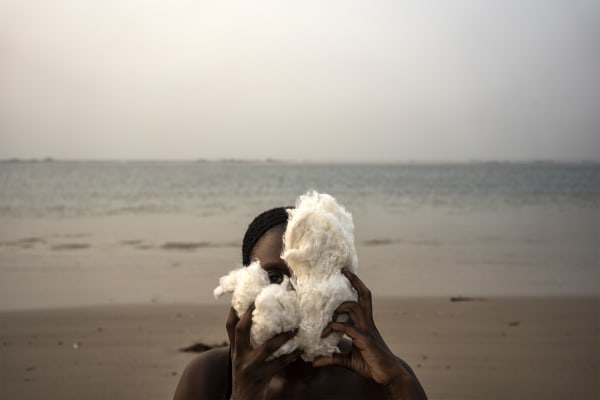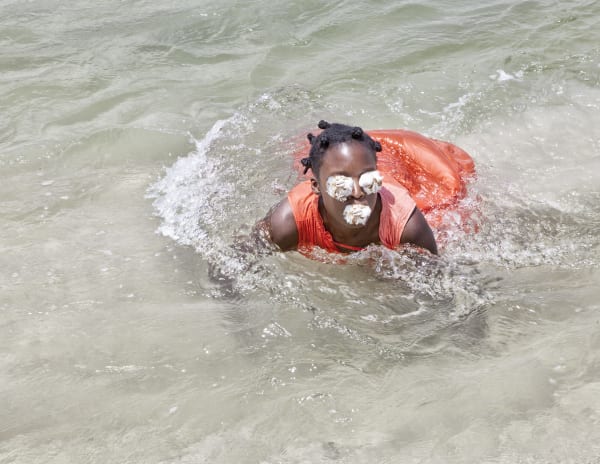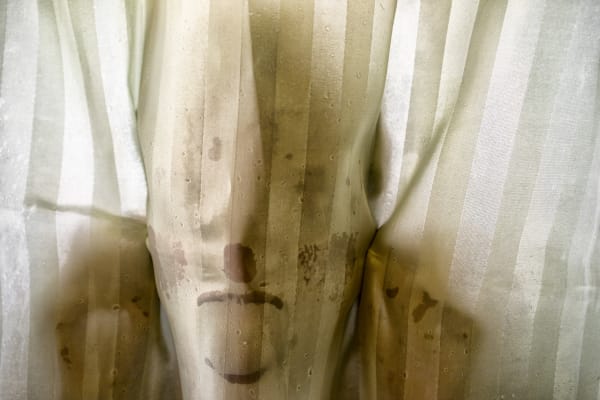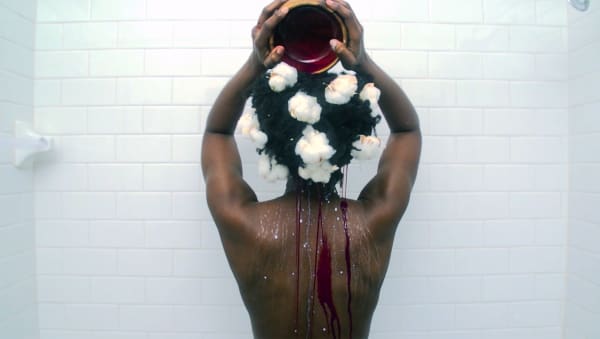Water is the connecting element that runs through the works of Adama Delphine Fawundu. The artist is interested in the nexus of social movements and collective tendencies and how these are mirrored in the motif of water. With a view to and awareness of transhistorical connections, a range of temporalities are connected: past, present, and future all coincide within Fawundu’s artistic vision.
As a locus of memory, the sea narrates generations of its own stories – and it is here that Derek Walcott’s poem The Sea is History, a source of inspiration to Fawundu alongside texts by Anton Wilhelm Amo, offers many forms of explicit connection. Fawundu's most recent video, Sunsum in Spirit, is currently part of an exhibition THE FACULTY OF SENSING at the Kunstverein Braunschweig in Germany. For her contribution to the exhibition, the artist pursued and filmed along Braunschweig’s waterways. Collaging image and sound material, Fawundu is developing a new language, that she describes as follows:
“The ‘new language’ symbolizes life, a sense of freedom, living rather than just surviving within the complexities of systematic oppression. This is what the body does intuitively – the ‘body’ never truly dies, it transforms.”
-

-

-
Available Works
-

-
Derek Walcott
The Sea is HistoryWhere are your monuments, your battles, martyrs?
Where is your tribal memory? Sirs,
in that grey vault. The sea. The sea
has locked them up. The sea is History.First, there was the heaving oil,
heavy as chaos;
then, like a light at the end of a tunnel,the lantern of a caravel,
and that was Genesis.
Then there were the packed cries,
the shit, the moaning:Exodus.
Bone soldered by coral to bone,
mosaics
mantled by the benediction of the shark's shadow,that was the Ark of the Covenant.
Then came from the plucked wires
of sunlight on the sea floorthe plangent harps of the Babylonian bondage,
as the white cowries clustered like manacles
on the drowned women,and those were the ivory bracelets
of the Song of Solomon,
but the ocean kept turning blank pageslooking for History.
Then came the men with eyes heavy as anchors
who sank without tombs,brigands who barbecued cattle,
leaving their charred ribs like palm leaves on the shore,
then the foaming, rabid mawof the tidal wave swallowing Port Royal,
and that was Jonah,
but where is your Renaissance?Sir, it is locked in them sea-sands
out there past the reef's moiling shelf,
where the men-o'-war floated down;strop on these goggles, I'll guide you there myself.
It's all subtle and submarine,
through colonnades of coral,past the gothic windows of sea-fans
to where the crusty grouper, onyx-eyed,
blinks, weighted by its jewels, like a bald queen;and these groined caves with barnacles
pitted like stone
are our cathedrals,and the furnace before the hurricanes:
Gomorrah. Bones ground by windmills
into marl and cornmeal,and that was Lamentations—
that was just Lamentations,
it was not History;then came, like scum on the river's drying lip,
the brown reeds of villages
mantling and congealing into towns,and at evening, the midges' choirs,
and above them, the spires
lancing the side of Godas His son set, and that was the New Testament.
Then came the white sisters clapping
to the waves' progress,
and that was Emancipation—jubilation, O jubilation—
vanishing swiftly
as the sea's lace dries in the sun,but that was not History,
that was only faith,
and then each rock broke into its own nation;then came the synod of flies,
then came the secretarial heron,
then came the bullfrog bellowing for a vote,fireflies with bright ideas
and bats like jetting ambassadors
and the mantis, like khaki police,and the furred caterpillars of judges
examining each case closely,
and then in the dark ears of fernsand in the salt chuckle of rocks
with their sea pools, there was the sound
like a rumour without any echoof History, really beginning.
Derek WalcottThe Sea Is History from Selected Poems by Derek Walcott. Copyright © 2007 by Derek Walcott.
